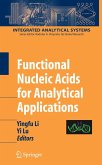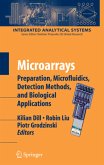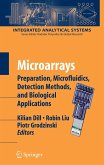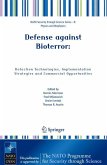Nature has long used nucleic acid aptamers and enzymes for regulatory activities, such as the recently discovered "riboswitches" involved in gene expression. The existence of a large array of natural and artificial functional nucleic acids has generated tremendous enthusiasm and new opportunities for molecular scientists from diverse disciplines to devise new concepts and real applications that take advantage of those nucleic acids for sensing and other analytical applications. This book provides a timely and comprehensive overview of recent advances in the field, from leading experts in biology, chemistry, and engineering. A variety of topics are covered, from fundamentals of functional nucleic acids, to their applications as sensors, to nanotechnologies; as well as integration of functional nucleic acids into practical analytical systems.
From the reviews: "This book consists of 15 chapters contributed by experts in the field of functional nucleic acids, mostly in the area of specific analytical applications of nucleic acids ... . this book affords a comprehensive collection of clearly presented, up-to-date reviews that broadly cover the numerous applications of functional nucleic acids. ... The chapters are of high quality ... that will be useful to newcomers entering the field of functional nucleic acids and to those interested in exploring other applications complementary to their own niches." (Jennifer S. Brodbelt, Journal of the American Chemical Society, Vol. 131 (32), 2009)








